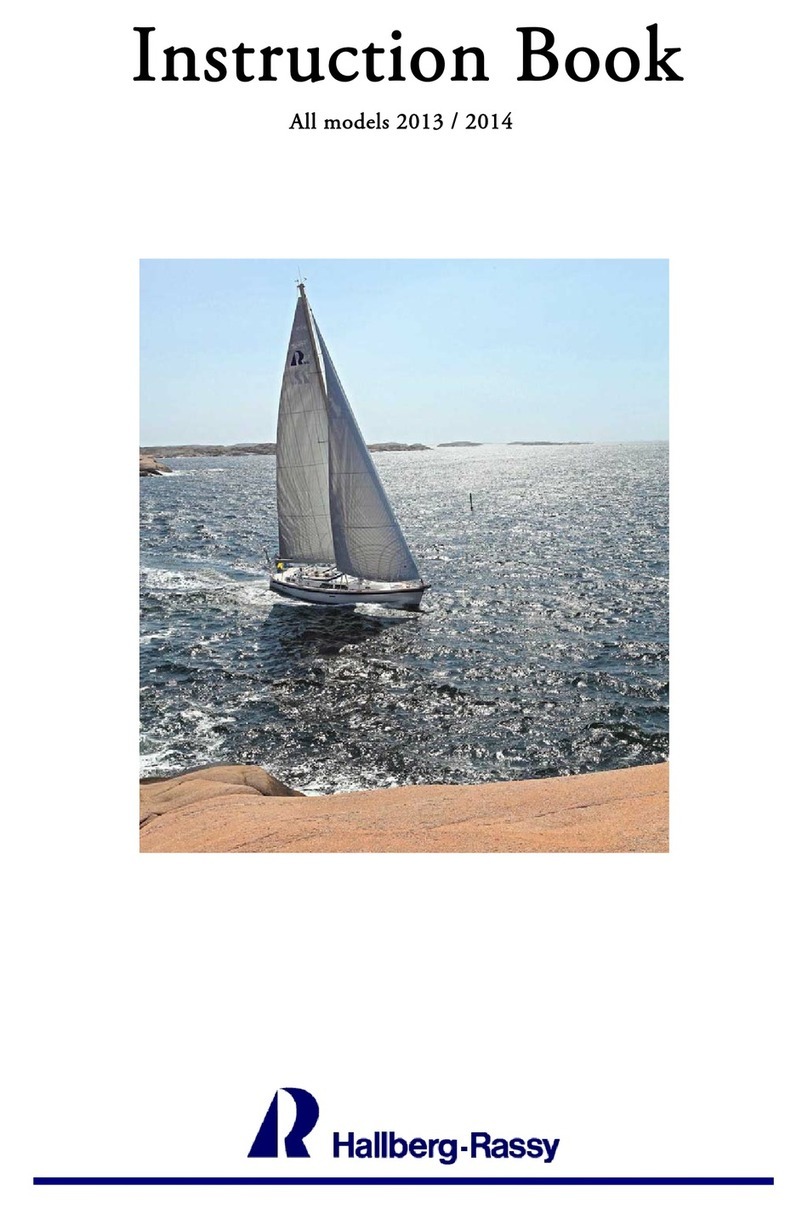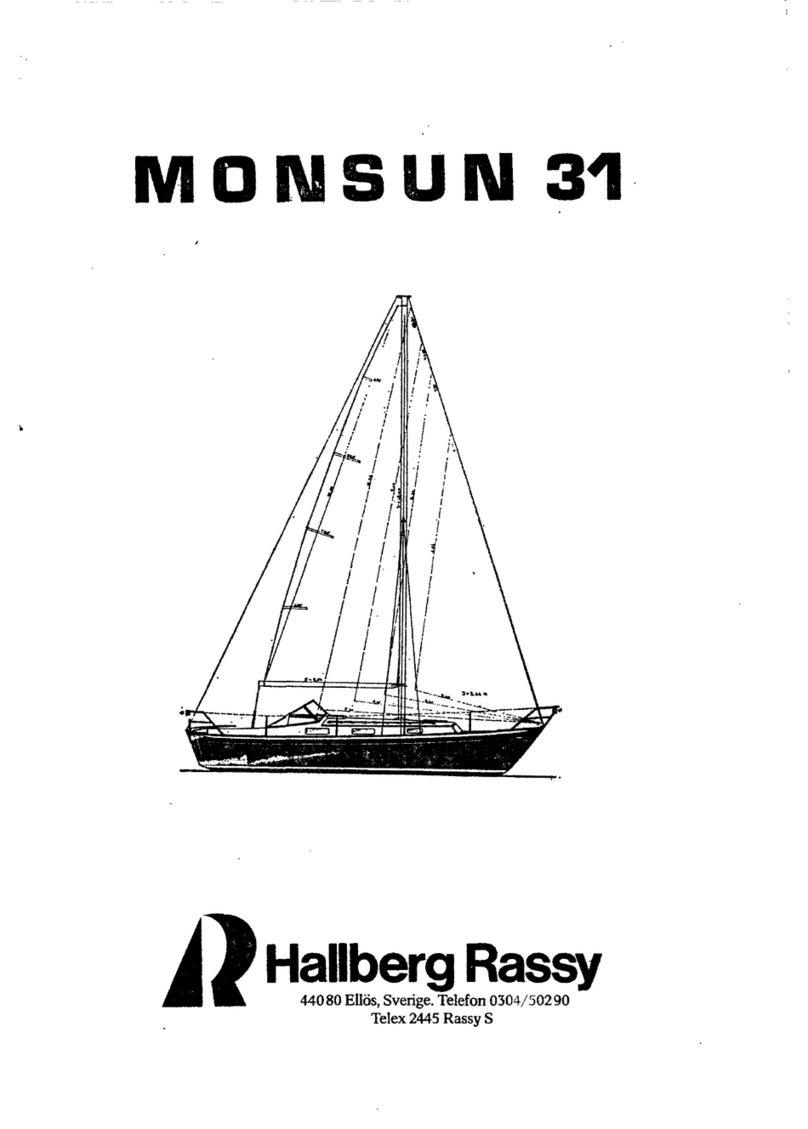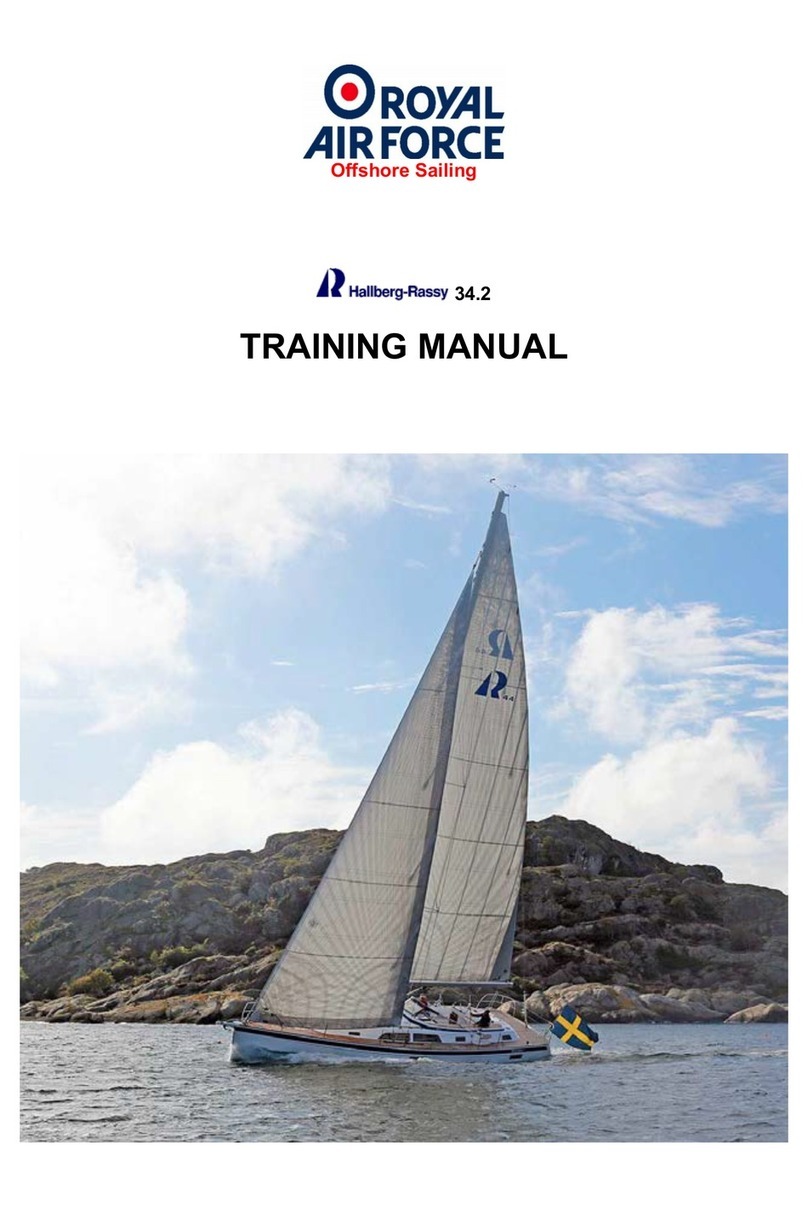9
The outer propeller shaft bearing is maintenance free in general. However, in very bad water conditions
(sandy waters) there may be a need to replace the rubber bearing. In this case you have to dismount the
propeller and two retaining screws on the sides. After this the rubber bearing can be pulled out with a
suitable tool.
The propeller
Every propeller must be checked regularly, at least very 12 months, more frequently if the boat is
extensively used. You must check the nut and that there is no play. A sail propeller with movable blades
should be greased at least once every season. Check that the blades move freely. If you want to demount
the propeller, please notice that this should be done when the propeller is still wet directly out of the
water. If you let the propeller dry, it may be very tricky to demount it.
The sacrificing anode is fitted so that it is sacrificed whilst protecting the shaft and the propeller. This
is more rapid when the antifouling is new, due to copper in the paint but will slower after some time. If
the anode is eaten away to more than 50 % or covered by a hard shell it should be replaced. The zinc
anode should be checked several times each year.
In certain waters or due to earth leakage of the shore connection there is sometimes a
highly increased consumption of sacrificing anodes. In most cases it is very complicated to find a good
explanation, but a good idea is not to have the shore connection plugged in more than necessary.
If you have a Gori propeller, this one has two gears. That means you have the first gear, with higher
revolution. The second gear (overdrive) has lower revolution. The higher revolution will give slightly
faster acceleration and more power against the wind in extreme situations, but a higher noise level. The
low revolution is the normal gear to use, slightly slower acceleration but less noise and thus greater
comfort. If you want to go from low revolution (overdrive) to high revolution: When your boat is
making some knots, go to neutral and then for a short moment to reverse, without letting the boat
move backwards. Now go to neutral and to forward again and you will have the high revolution. If you
want to go from high revolution to low revolution (overdrive): When your boat is making some
knots, go to reverse and let the boat move backwards. Go forward again and you will have the low
revolution (overdrive) gear. Please read Gori’s manual for details. After using your boat for a while, you
will by instinct hear by the sound what gear you are using. When in doubt what gear you use, give full
gas when the engine is warm. By watching the RPM on the engine panel you will know which gear you
are using.
Important: If you have a Gori two geared propeller, the engine needs to be used at maximum RPMs on
the higher revolution gear (the non-overdrive) shortly now and then, at least once a month. If not, your
engine will be overloaded and damaged. That will for example result in that the engine creates black
smoke and/or the turbo charger stop working.
How to go into sailing position: please see next page.
1= Engine
2= Gearbox
3= Shaft coupling clamp
4= Stuffing box
5= Shaft sleeve
6= Stern bearing
7= Propeller
8= Pro

































